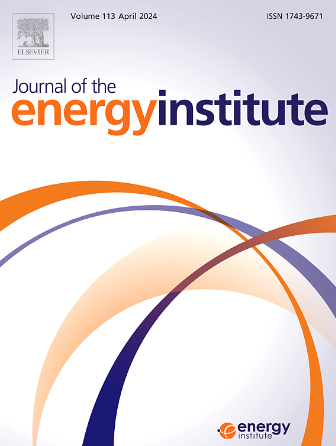Optical study on ammonia-diesel dual fuel combustion at low engine loads
IF 6.2
2区 工程技术
Q2 ENERGY & FUELS
引用次数: 0
Abstract
Ammonia is an excellent hydrogen carrier that can be produced by renewable energy sources, showing high potential to reduce carbon emissions. Ammonia utilization in internal combustion engines has received extensive attention. One practical pathway is directly injecting diesel into the combustion chamber to ignite the premixed ammonia. However, it encounters significant challenges of unstable and incomplete combustion and low ammonia energy ratios under low engine loads. The ammonia-diesel combustion mechanism at very low engine loads is not well understood. Experimental data combining ammonia flame development, heat release, and emissions at low engine loads remains limited. In this study, cylinder pressure and natural flame luminosity (NFL) were simultaneously measured in an ammonia-diesel dual-fuel optical engine fired continuously. The combustion, flame development, and NOx emissions at low loads (net indicated mean effective pressure, IMEP <4 bar) were analyzed under varied diesel injection pressures and ammonia energy ratios. The results show that the diesel mass and distribution range are the key determining factors of the ammonia-diesel combustion efficiency under low engine loads. The diesel premixing rates are enhanced when the diesel injection pressure increases from 600 bar to 1000 bar, which forms more ignitable mixture in a larger region. This facilitates the earlier formation of ignition nuclei, enlarged flame zone, and improved ammonia combustion efficiency. Increasing the ammonia energy ratio from 60 % to 70 % slows the combustion process, reducing the IMEP and engine combustion stability. The NFL imaging indicates that the unburned ammonia resides in the center of the combustion chamber where the diesel fuel fails to cover. The ammonia-diesel combustion's NOx emissions are closely related to the combustion temperature at low engine loads.
低负荷下氨柴油双燃料燃烧的光学研究
氨是一种优良的氢载体,可再生能源生产,具有很高的减少碳排放的潜力。氨在内燃机中的利用受到了广泛的关注。一种实用的途径是直接向燃烧室注入柴油点燃预混合氨。但在低负荷条件下,其燃烧不稳定、燃烧不完全、氨能比低等问题面临重大挑战。氨-柴油在极低发动机负荷下的燃烧机理尚不清楚。结合氨火焰发展、热释放和低发动机负荷排放的实验数据仍然有限。在连续点火的氨-柴油双燃料光学发动机中,同时测量了气缸压力和自然火焰亮度(NFL)。在不同的柴油喷射压力和氨能量比下,分析了低负荷(净表示平均有效压力,IMEP & 4bar)下的燃烧、火焰发展和氮氧化物排放。结果表明,低负荷工况下,柴油质量和分布范围是决定氨柴油燃烧效率的关键因素。当柴油喷射压力从600 bar增加到1000 bar时,柴油预混率提高,在更大的区域内形成更易燃的混合气。这有利于点火核的早期形成,扩大火焰区,提高氨的燃烧效率。将氨能比从60%提高到70%会减缓燃烧过程,降低IMEP和发动机燃烧稳定性。NFL成像表明,未燃烧的氨存在于燃烧室的中心,柴油燃料未能覆盖。低负荷时氨柴油燃烧的NOx排放与燃烧温度密切相关。
本文章由计算机程序翻译,如有差异,请以英文原文为准。
求助全文
约1分钟内获得全文
求助全文
来源期刊

Journal of The Energy Institute
工程技术-能源与燃料
CiteScore
10.60
自引率
5.30%
发文量
166
审稿时长
16 days
期刊介绍:
The Journal of the Energy Institute provides peer reviewed coverage of original high quality research on energy, engineering and technology.The coverage is broad and the main areas of interest include:
Combustion engineering and associated technologies; process heating; power generation; engines and propulsion; emissions and environmental pollution control; clean coal technologies; carbon abatement technologies
Emissions and environmental pollution control; safety and hazards;
Clean coal technologies; carbon abatement technologies, including carbon capture and storage, CCS;
Petroleum engineering and fuel quality, including storage and transport
Alternative energy sources; biomass utilisation and biomass conversion technologies; energy from waste, incineration and recycling
Energy conversion, energy recovery and energy efficiency; space heating, fuel cells, heat pumps and cooling systems
Energy storage
The journal''s coverage reflects changes in energy technology that result from the transition to more efficient energy production and end use together with reduced carbon emission.
 求助内容:
求助内容: 应助结果提醒方式:
应助结果提醒方式:


